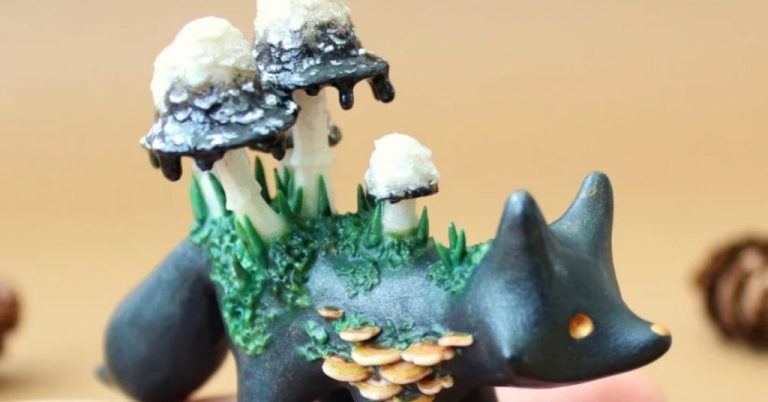How Do You Carve Wood Texture In Clay?
Creating wood textures in clay is a unique way to add visual interest and dimension to pottery and sculptures. The carved texture mimics the natural grain and knots found in real wood, bringing an organic, rustic feel to ceramic pieces.
Wood texturing clay has many benefits for ceramic artists. It allows you to make your clay creations look like wood without having to actually use wood, which can be difficult to work with. The woodgrain patterns also help hide imperfection in the clay. Carving textures by hand gives you full control over the design, allowing you to create custom wood grains. It’s an affordable technique that only requires some basic clay carving tools.
Textured clay finished with wood-toned glazes can resemble carved wood pieces. The faux wood look is popular for making vases, lamps, trays, plaques, and wall art. Wood texturing expands the possibilities for clay work and allows you to create unique nature-inspired designs.
Gather Materials
The first step in carving wood texture into clay is gathering the right materials. The type of clay you choose is important, as some clays hold fine detail better than others. Polymer clay or oil-based modeling clay are good choices for capturing wood grain texture. Avoid clays that are too soft or sticky. You’ll also need basic sculpting tools like loop tools, silicone tipped clay shapers, craft knives, and rubber tipped tools. Gather reference photos of different wood textures like oak, pine, cedar etc. Having photos to refer to will help you recreate realistic wood grain in the clay.
Prepare the Clay
Before you can begin carving wood texture into the clay, it’s crucial that the clay is properly prepared. The clay must be thoroughly wedged or kneaded to ensure an even consistency throughout. Wedging involves folding and pressing the clay to distribute moisture evenly and remove any air pockets that could lead to cracking or exploding in the kiln. It’s best to wedge the clay on a clean, nonporous surface using your palms and the weight of your body.
Work the clay until it has a uniform texture and flexibility. Pay attention to the consistency – if it’s too wet, it will be sticky and risk sagging when carved. If too dry, it will crack. The clay should be soft and smooth, but not tacky. Test the consistency by gently pressing into the clay. Your fingerprint should leave an impression but not sink in deeply. Get the moisture content just right at this stage, as you won’t be able to re-wedge once you start carving.
Sketch Out the Design
Before you start carving into the clay, it’s important to sketch out the design you want to achieve. This will serve as a guide as you carve out the wood grain texture.
Think about whether you want a simple, straightforward wood grain pattern or something more complex with varying textures and directional changes. Consider the look and feel you want the finished piece to have.
Also pay attention to the grain direction in your sketch. Wood grain follows the length of the wood, so keeping the grain lines consistent will give your clay carving a more realistic and natural look. Mark the grain direction in your sketch.
Take time on the sketching step to map out the exact wood texture you aim to carve. This will make executing it in the clay much easier and help you avoid mistakes.
Create the Base Texture
After sketching out the design on the clay, it’s time to start imprinting the main wood grain texture. There are a few different tools you can use for this step. Many sculptors like to use actual wood pieces, pressing them into the clay to create realistic wood impressions.
You can use all different types of wood – try branches, bark, sticks, boards, etc. Press them firmly into the clay at different angles to imprint the unique wood grain patterns. Pay attention to the direction of the grain and imprint accordingly for an authentic look.
In addition to wood pieces, there are also some great texturing tools like clay sculpting loops, ribs, rollers, and needles. Drag these across the surface to create long, continuous indentations that mimic the wood grain. Go in different directions and use a variety of tools for the most realistic effect.
As you imprint the clay, consider the type of wood you want to portray. Soft woods like pine or cedar have a less pronounced grain compared to hardwoods like oak or maple. Make your imprinted lines and grooves appropriate for the desired wood type.
Take your time with this step, thoroughly working the clay to set up the overall wood texture. The deeper and more defined you can make the base grain, the better the final result will be. These initial imprints will show through in the finished sculpture.
Refine the Texture
Once you’ve created the base wood grain texture, it’s time to refine it by carving in deeper grooves and adding finer details. Use your clay carving tools to go back over the main lines and ridges you’ve carved and press harder to deepen them. This will create more dramatic shadows and high points when the clay is fired.
Next, take a smaller carving tool and add additional smaller grooves across the grain lines to represent the fine pores and patterns within the wood. You can add tiny circular motions, wavy lines, cross-hatching or whatever patterns you like to achieve your desired wood look. Work slowly and carefully to get clean, crisp lines.
Stand back periodically to see how the texture looks from a distance. The deeper grooves and finer details will make the wood grain really start to pop. Continue refining until you are satisfied with the look. Having a sample of real wood can be helpful for reference as you carve.
Soften and Blend
Once you’ve carved out the main wood grain and accent textures, it’s time to soften transitions and blend the textures together. This helps make the wood texture look more natural and realistic. Go over the clay surface with a soft brush or your fingers, smoothing out any hard edges or lines. You don’t want the transitions between textures to look abrupt or artificial. Gently rub over areas where textures intersect to help them blend seamlessly into one another.
Pay extra attention to softening carved lines in the wood grain. Drag your brush or finger perpendicular to the grain lines to soften them. You can also use a slightly damp brush to further soften and blend the textures. The goal is to create natural, organic looking wood grain that has variation in depth, width, and softness of the lines.
Take your time with this step and blend until you’re satisfied with the realism of the wood texture. The subtle smoothing and blending will make a big difference in achieving a natural, realistic carved wood look in the clay.
Add Accent Textures
After carving the base wood grain, you can further enhance realism by adding accent textures like knots and cracks. These details bring extra visual interest while making the clay look more like actual wood.
To add knots, roll small balls of clay and press them into the surface wherever you want knots to appear. Use a needle tool or skewer to indent the center of each knot. For an aged look, drag the needle tool outwards from the knot to imitate cracks radiating from it.
For cracks and crevices, impress lines into the clay with a knife or needle tool. Make some cracks follow the wood grain, while others go against it. Vary the depth and length for natural variation. You can also use an engraving tool to carve long, winding cracks throughout the wood texture.
Staining or applying glazes is another great way to enhance realism. For stained wood effects, apply acrylic paints or oil paints diluted with water or mineral spirits. Work in thin layers, letting the stains penetrate and dry between applications. Concentrate on accentuating knots, cracks, and crevices. You can also use a wood burning tool to carefully char parts of the wood for a burnt appearance.
Glazing involves applying very thin, translucent layers of colored slip or glaze. This creates a subtle tint while allowing the carved wood texture to show through. Vary the glaze color and application to make some areas darker or lighter. Focused glazing on cracks and knot holes creates striking effects. Just be sure to let each layer dry fully before adding the next.
Let Dry and Fire
Proper drying is crucial when working with clay. Allow the carved clay piece to air dry completely before firing. Drying too quickly can cause cracks as moisture tries to escape. Avoid placing in direct sunlight or near heating elements. Let the clay dry over several days until no moisture remains.
Once fully dry, the clay must be fired in a kiln to harden and finalize the sculpture. Firing schedules vary based on the type of clay used. Generally, fire to about 2,000°F ensuring the kiln reaches temperature at the proper ramp rate. Fast firing can cause cracks or explosions. The total firing cycle may take 8-12 hours. Allow the kiln to cool completely before removing the fired piece.
Finished Result
Creating realistic wood grain texture in clay can result in beautiful, nature-inspired pottery. When done well, clay carved with wood texture has a remarkable resemblance to actual wood. The finished piece captures the organic, raw essence of natural wood in a durable ceramic material.
There are many benefits to developing wood textured ceramics. The process allows artists to emulate the aesthetics of wood while taking advantage of clay’s survivability and sturdiness. These pieces stand out with their trompe l’oeil illusion of carved timber translated into clay. The handmade quality and attention to realistic detail give each one a sense of craftsmanship and artistic flair.
To complete the clay wood texture effect, consider adding colorful glazes, stains, or paints. Experiment with different finishes to accentuate the grain and knots for added realism. Once fired, apply a food-safe sealant if serving ware is desired. Enjoy the process of creating faux wood ceramics that mimic the complexity of natural wood grain in a lasting medium.


